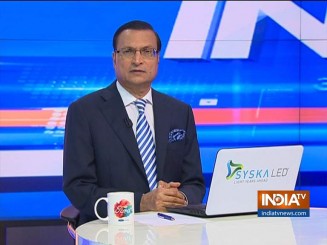 The BJP-Shiv Sena alliance trounced the Congress-NCP combine in the Maharashtra assembly elections and secured a comfortable majority. In Haryana, the BJP emerged as the largest party with six seats short of majority. All eyes are now on independent MLAs and Dushyant Chautala’s Jannayak Janata Party as the BJP has begun efforts for government formation. BJP has both the options available and it is up to the party leadership to decide.
The BJP-Shiv Sena alliance trounced the Congress-NCP combine in the Maharashtra assembly elections and secured a comfortable majority. In Haryana, the BJP emerged as the largest party with six seats short of majority. All eyes are now on independent MLAs and Dushyant Chautala’s Jannayak Janata Party as the BJP has begun efforts for government formation. BJP has both the options available and it is up to the party leadership to decide.
In Haryana, BJP had to pay the price for mistakes committed in ticket distribution. Several party dissidents, who were denied tickets, contested as independents and won. There were several other reasons too for the party failing to repeat its 2014 performance. However, nobody can dispute that Chief Minister Manohar Lal Khattar provided a corruption-free rule for five years and treated all castes and communities without giving any undue favour. However, the voters were unhappy with the performance of the ministers. Seven out of eight ministers lost.
This assembly election marked the emergence of Dushyant Chautala as a major non-Congress opposition leader. He campaigned throughout the state and gave tickets to rebels from BJP and Congress, and his party JJP managed to win 10 seats in its electoral debut. Not a small performance for a leader aged 31 years. Dushyant became the youngest MP in Lok Sabha at the age of 26, formed his party at the age of 30 and challenged his own family members in politics. Today, the Indian National Lok Dal set up by his grandfather Om Prakash Chautala could win only a single seat.
BJP may manage to form the government in Haryana with the support of independents, but two concerns need to be taken note of.
One, the party leadership was too overconfident. It was aiming at 75-plus seats, and had thought there was no challenge worth the name with the Chautala family and Congress divided. This assessment was proved wrong. Had Prime Minister Narendra Modi not campaigned in the state, the party could have fared badly. During the Lok Sabha polls, under Modi’s leadership, BJP won all the ten LS seats which accounted for 79 assembly segment leads. This has now dwindled to almost half in the assembly polls.
Two, the Congress went to Haryana polls with a clearly divided house and yet won 31 seats. The state unit chief Ashok Tanwar who led the party for last five years, quit and supported Dushyant Chautala’s party. Imagine what the Congress could have achieved if there had been unity in the state unit. The tables could have turned for the BJP in the final run.
In Maharashtra, the election results this time cannot be compared with the 2014 assembly poll results. At that time, the four main players, BJP, Shiv Sena, Congress and NCP were contesting separately. The BJP leadership assessed that there could be anti-incumbency factor and therefore, set up an alliance with the Shiv Sena. BJP contested 150 seats, and won 102, while the Shiv Sena contested 124 and won 61 seats.
Both the BJP and Shiv Sena had to face problems. One, from party rebels who had crossed over to other parties after being denied tickets, and two, both the parties accomodated turncoats from other parties and gave them tickets. The net result: lesser gains, more losses.
Only a large-hearted statesman like Narendra Modi had the sagacity to praise his state leaderships despite poll reverses. He gave the credit for victories in both Maharashtra and Haryana to the state leaderships. The hard fact is that the BJP poll campaign always relies on Modi. Had the Prime Minister not toured both the states to address rallies, the results could have been unfavourable. Voters in both states have tremendous trust in Modi’s leadership and they came out to vote for the party regardless of the performance of the state units.
Click Here to Watch Full Video | Get connected on Twitter, Instagram & Facebook